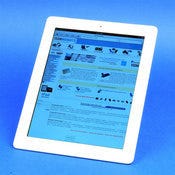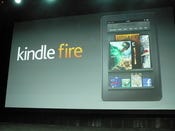Web 2.0 Expo: Lessons Learned Building Tablet AppsWeb 2.0 Expo: Lessons Learned Building Tablet Apps
Time magazine exec outlines lessons learned in launching an iPad app the same day the tablet was put on sale.


Apple iPad 2 3G Teardown
(click image for larger view)
Slideshow: Apple iPad 2 3G Teardown
Whether or not your company is a startup, it needs to act like one when launching tablet applications, according to the Time Inc. executive who oversaw the launch of a digital Time magazine in conjunction with the launch of the iPad last year.
Speaking at Web 2.0 Expo, a UBM TechWeb/O'Reilly Media event in New York, Time's Senior Director of IT Publishing Solutions Scott Smith noted that although Wired Magazine initially got more buzz out of the launch of its digital edition, the Time magazine iPad app has consistently ranked as the top grossing digital magazine title on the iTunes store, and another Time publication, People magazine, has since become number 2. "There's nothing cool about our application--it just works," Smith said.
The publisher has also created digital editions of Fortune and Sports Illustrated, with 17 more titles scheduled to come online by January 2012. Time has become one of the leaders in setting standards for magazine publishing on the iPad. Time has also created products for Android devices, Barnes & Noble's Color Nook, and some other also-rans like the BlackBerry Playbook and the now discontinued HP TouchPad. Time has tried to create unique native experiences for each of these devices, rather than simply serving up repurposed PDFs of the magazine, he said.
Time managed to be one of the first on Apple's tablet despite never having gotten its hands on an iPad for testing of the app, prior to the product introduction. That was because Time refused to sign Apple's non-disclosure agreement, Smith said. When he and the lead software developer visited Apple headquarters to demo the software, shortly before the tablet's launch, the software that had worked well running on the simulator Apple provided for development on a desktop computer crashed when loaded onto the actual device, he said. So the developer had to camp out in Cupertino for an intensive 72-hour debugging session to slim down the software.
Early reviews were dismal, particularly since readers had to pay $4.99 per week for the content, even if they already subscribed to the print edition. Time and Apple eventually reworked the terms so subscribers to the print version of the magazine could get the content for free. Although the product hasn't changed substantially since its launch, reviews have started to improve as readers learn to appreciate it more.
Smith said many of his lessons learned would apply to many contemporary software projects. "You have to embrace the startup mentality. You have to run the sprints, and you have to launch the product before it is done," he said. In other words, organize software development into short bursts of activity, deliver it to customers sooner rather than later so you can get feedback, and refine as necessary. That wouldn't be the right way to deliver a new aircraft control system, where the cost of failure is high, but it is the right way to deliver a digital product into a fast-changing market.

Amazon Kindle Fire: Visual Tour
Amazon Kindle Fire: Visual Tour (click image for larger view and for slideshow)
"Your first release to the customers, especially in a startup, is the way to start the conversation with them about what they want--until the public gets to see it, you really haven't developed squat," Smith said.
Time created the software in partnership with Woodwing, a company based in the Netherlands that it had partnered with several years before to retool its publishing workflow. Woodwing was venturing into new territory with the creation of the tablet apps, but Smith said he had confidence in the company because it had built its product on open standards and took enough pride in its work to push back against unreasonable requests. Some other software and consulting firms act like "yes" men, saying "yes" to whatever the customer wants, whether or not it makes sense, Smith said, and its ultimately better to partner with a company that has the integrity of its convictions.
One of the things that helped keep the project on track was it had a deadline that couldn't be moved. That made it easier to force tradeoffs like dropping features that were taking too long to program because without those hard choices the product wouldn't have been ready in time for Apple's launch of the iPad in April 2010. If at all possible, "pick a date that can't be moved--and if the reason for the date is external, all the better," Smith said.
As a non-developer overseeing a software project, he said a big part of his job was to insulate the developers from the company politics swirling around the project and present them with a very clear set of goals. The goals for the first product release also needed to be negotiated, so that both he and the developers had an agreement on what was and was not realistic.
Smith suggests developing a very clear one-page list of project goals and being willing to whittle it down to just the essentials. Some of the items that don't make that pared-down list may get added back in later, in trade for other items that were supposed to be included that turn out to be more difficult to achieve than expected. If the developers see your full wish list at the beginning, they may also manage to sneak in a few more items at the end and give you a pleasant surprise.
When you first see a working prototype of the app the developers have created, don't panic, Smith advised. Look past the warts that are sure to exist and decide whether the software at least delivers the core functionality you agreed on as a goal. If yes, the developers should charge ahead "in a dead sprint to the end," Smith said. If no, consider whether it's so far off the mark that you should consider pulling the plug, he said.
What you deliver will not be perfect. Smith said reading Time on an iPad is "an interesting experience today," but not the ultimate experience he would like to deliver. "We're so very clearly at the beginning of this process," he said.
Attend Enterprise 2.0 Santa Clara, Nov. 14-17, 2011, and learn how to drive business value with collaboration, with an emphasis on how real customers are using social software to enable more productive workforces and to be more responsive and engaged with customers and business partners. Register today and save 30% off conference passes, or get a free expo pass with priority code CPHCES02. Find out more and register.
About the Author
You May Also Like






